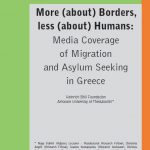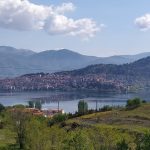[Republished from our MediaRefugees blog spot https://www.mediarefugees.com/2020/10/02/linking-media-content-to-media-effects-research/]
We are now writing the report from the first phase of the project on media representations of immigration and asylum issues. We will soonish be able to make it public. And as we do so, we are thinking of where we have been and where we are going. Let’s say, kind of an existential research mode.
Looking back a couple of years ago, there is a memory of myself heading towards the end of my PhD thesis*: me switching between my office and the living room, between loads of notes, finding the story in my data, while a new story was being born. My research findings were clearly setting questions and suggesting future research.
One of the key findings of my comparative doctoral research was that some indicators of content analysis did not change significantly across different newspapers, incidents or periods. Immigrants’ voice was (almost) completely absent from all newspapers, in all periods. And so were solutions. Reports about immigration almost never challenged the victim and villain approach. Human stories were in very few cases represented. Debunking of stereotypes was very infrequent and so on. These findings were repeated regardless of the political affiliation of the media outlet (left, centre, right), the year or the incident, indicating a number of prevailing ‘blind spots’ in news coverage of immigration in Greece and what I name a ‘journalism of conventions’ lens; a set of repeated, deep-rooted and undisputed journalistic practices (Galtung & Ruge, 1965) that have become common sense for journalists and for the audience, although having important consequences on the quality of information. Ιn the end, some aspects of immigration and asylum issues were almost never touched by journalists, resulting in a very poor version of complex events, facts and phenomena that shape political and public discourse and leaving the audience vulnerable to simplistic forms of understanding and interpreting the world.
But as these ‘blind spots’ and ‘conventions’ were being revealed, I began to wonder how they affected the audience’s perceptions and attitudes about immigrants and refugees. Ηow does absence of migrant/refugee voice, for example, affect prejudice and stereotypes towards immigrants and refugees?
From a content analysis perspective, Crawley, McMahon and Jones (2016) explain that the lack of migrant voices as sources in the media can deprive the audience of a complex or nuanced understanding of migration issues, can have negative consequences for migrant integration or have an impact on immigrants’ personal well-being and security, as this absence of voice undermines the degree to which they feel that they belong or are accepted by a society.
But as it is many times the case with content analysis, media effects are only implied.
Diving into audience research and media effects was a common decision between Antonis Gardikiotis (who is now our academic advisor in the current project) and I, before I had even finished my PhD. I discussed it with Christos Frangonikolopoulos, my supervisor in my PhD, and then with Christina Angeli, who has also been doing research on media representations of refugees, although from a health perspective. I guess this is how it all started.
In Greece, combining media content with media effects research in the same research project is not really common. [Not that it’s common elsewhere in the world]. So, from a methodological point of view, a significant innovation of MediaRefugees is that it exploits, composes and bridges two different research traditions; media representations and media effects. On the one hand, studies on media representations of immigration rarely extend to how media content is perceived by audiences and its effects to public perceptions and attitudes. On the other hand, in media reception literature, studies usually explore media effects without having examined the media content first; hence, media messages are not revealed on actual time, leading to a limited approach of media representations of immigration.
Almost a decade ago, in one of our ‘stekis’ in Metaxourgeio, a friend working on refugees’ integration was explaining to me the idea and importance of becoming a ‘bridge person’ or a ‘bridge expert’.
It feels now we are walking on this bridge. Our very own bridge. On one side of the bridge, there is ‘media content’. On the other side of the bridge, there are ‘media effects’. But not just that. On one side, there are journalists, editors, media workers and their work, the news they produce. On the other side, there is the audience, all of us. Our emotions, perceptions, attitudes. We are now crossing this bridge trying to map and understand how the media, as an important source of information and a key socializing agent, affects people’s perceptions, attitudes and emotions towards immigrants and refugees, and, at the same time, understand how immigrants and refugees themselves perceive these media representations and how this affects their sense of belonging or being accepted by the Greek society and, eventually, their ability to integrate into it. Last but not least, we hope our research will help journalists and media professionals to estimate the consequences (negative or positive) of their work.
Naya
* My PhD thesis “Diversity and peace journalism: representations of immigration in the Greek press during the Greek financial crisis” examined the ways in which different Greek media outlets portrayed immigration during the first years of the Greek financial crisis, between 2011 and 2014, through a peace journalism lens. For more about it, please visit: https://www.didaktorika.gr/eadd/handle/10442/44641
References:
Crawley, H., McMahon, S., & Jones, K. (2016). Victims and Villains: Migrant Voices in the British Media. Coventry: Centre for Trust, Peace and Social Relations, Coventry University.
Galtung, J. & Ruge, M. H. (1965). The Structure of Foreign News: The Presentation of the Congo, Cuba and Cyprus Crises in Four Norwegian Newspapers, Journal of Peace Research, 2(1), 64-90.











Leave a Reply